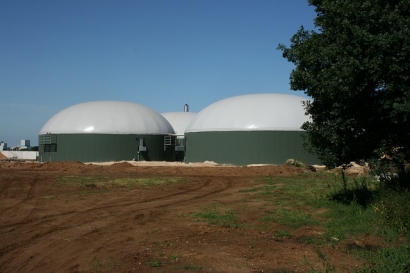
The sector is well developed in Europe and is ready to scale-up. According to data from the European Biogas Association, the combined production of biogas and its upgraded from, biomethane, could cover today 4.6% of the whole EU gas demand. By 2050, about 30-40 % of EU gas needs can be met by biogas/biomethane. As one of the global leaders in biogas production, European producers are now seeking new ways for cooperation with third countries to support the deployment of biogas outside EU borders.
The EBA, together with the German Biogas Association (FvB) and the Austrian Compost and Biogas Association, are already working on this direction in the framework of the DiBiCoo EU Project. One of the fruits of this cooperation is the Categorization of European Biogas and Gasification Technologies presented today. The overview is divided in 2 different publications, one dedicated to anaerobic digestion (AD) and the other one focused on gasification. These guides are intended as a solid starting point in learning about anaerobic digestion and gasification.
After the introductory section about Anaerobic Digestion (AD), the first publication follows the logic of the biogas production process, progressing from on-site feedstock storage options and pre-treatment requirements to the various digester technologies. Special, detailed chapters are included on issues of particular relevance for all biogas plants (including, for example, a chapter on measurement, control and regulation technologies). The upgrading of biogas to biomethane quality is introduced, along with other biogas applications, such as its GHG mitigation potential and use in Combined Heat & Power (CHP) plants.
The second publication, tackling gasification, provides an introductory section on biomass conversion processes. The text follows the logic of the wood gas production process, progressing from the various gasifier technologies to feedstock specifics, storage, and necessary pre-treatment. Special, detailed chapters on issues of particular relevance for all gasification plants are included (e.g. on measurement, control and regulation technologies).
The deployment of renewable energy, including biogas, to reduce greenhouse gas emissions at global level is urgent. Global cooperation in the framework of projects such as DiBiCoo is essential to speed-up this process with the implementation of new renewable energy projects, ensuring the best possible future for our next generations. The value of biogas is heightened in scenarios such as the IEA Sustainable Development Scenario (SDS), which meet in full the world’s goals to tackle climate change, improve air quality and provide access to modern energy.

